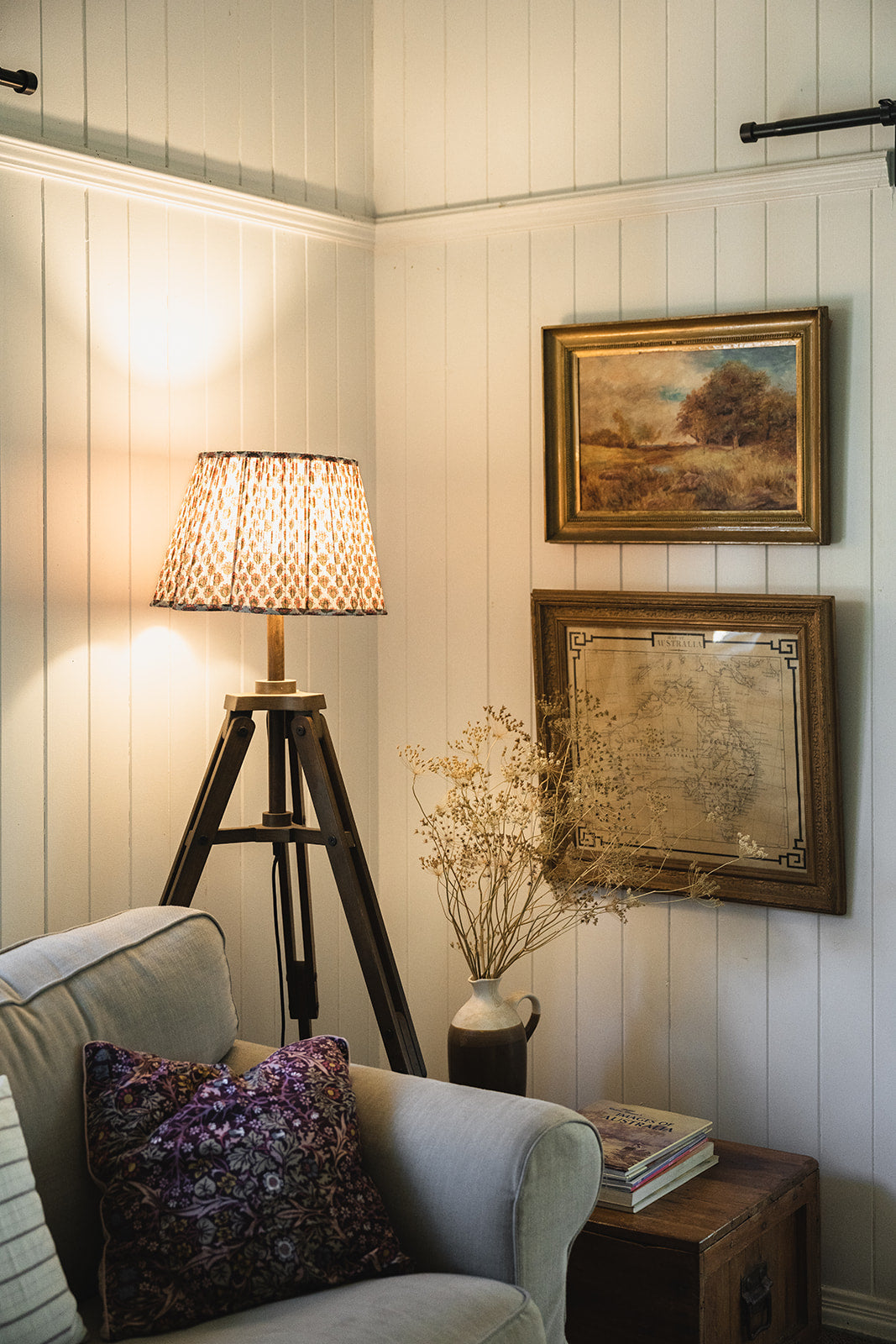
Common mistakes when choosing a lamp and how to avoid them
Share
A lamp can be the hero of a room, the finishing piece which ties the whole look together and, most importantly, a functional and highly utilised light source, but when it comes to choosing the right lamp there are a few mistakes you should try to avoid. Here are some of the most common mistakes people make when choosing a lamp.
Lamps that are the wrong height
If a lamp is the wrong height it can look out of place in the room. Too short and it will fail to be practical or make an impact, and too tall and it can make the room look smaller by crowding the other pieces around it.
Consider not only the lamp base, but also the combined height of the base and shade when you make your purchase and think about different surfaces areas where a lamp could work. Such as the floor or even as a wall sconce, rather than simply imagining the lamp sitting on tables and countertops.
Picking an unsuitable lamp base
A very common mistake is choosing the wrong lamp base to suit the space or the shade. Take some time to measure the surface area carefully to ensure the lamp base will not be too overpowering or too large, or that it’s not so small it will not make an impact. Existing furniture and décor will also play a part here – if your desk is a heavy, dark wooden antique piece, a small, delicate lamp may not be the right look.
Use Pip and Haze’s measurement guide for peace of mind that you are purchasing the right size shade for your base.
Mixing interiors styles
If your home has a coastal Hamptons theme it wouldn’t make sense to suddenly introduce a heavy tartan lampshade. Mixing colours and prints can be a fun way to add unique flair, texture and depth to your look, but make sure the fabric weights and patterns run along the same theme, so the overall feel is cohesive and tells a story. Mixing too many styles won’t look eclectic and interesting, it will just look misguided and mismatched.
Choosing an unsuitable lamp shade
Just as the lamp base needs to be right, the lamp shade has to be appropriate as well. This means not buying a shade which is too large for the base or the area it is intended to sit in. Use our measuring guide to make sure you are buying the correct shade for your base.
Choosing a lamp shade in the wrong colour
There is actually no right or wrong when it comes to the colour of your lamp shade and you should always choose a colour and style which reflects your personal tastes, but there are some rules to follow if you want to illuminate a particular space, such as your home office or bedroom. Typically, lighter shades such as white, ivory, cream and off-whites let the most light through and add more brightness to the room. With that in mind, lamp shades are often designed to diffuse small amounts of light and this can help you control illumination levels in the room. Bedrooms and more ambient spaces typically fare better with yellow-toned shades which create relaxing light. Dark shades can work well in entertaining spaces where you want to create an intimate setting.
Metals that don’t match
Although there are no rules when it comes to home décor, it is safe to say that mixing too many metal finishes can leave your room looking a bit messy and make it difficult to tie the overall look together. Whilst bronze works well with copper and chrome is ideal with nickel and light bronze, mixing any and every metal together without too much thought is typically a faux pas.
Neglecting to use space efficiently
Lamps don’t need to sit solely on tables, benches or chests of drawers. Floor lamps are a great way of adding light to a room where surface space may be limited as they can be placed in corners. Have their bases concealed under couches or tables or be positioned in other small, awkward spots where larger pieces of furniture won’t fit. Floor lamps can also act as a way of layering a space and making a room feel larger.
Using harsh or inappropriate light globes
Everything else can be perfect but if the light globe you use is emitting the wrong type of light, it can throw the whole room off. Harsh, cold tones can often be far too bright and lights that are too golden may make the room feel welcoming but tend to not be as useful at brightening up the space.
If your room is minimalist, modern in style and features lots of white and blue tones your best bet is to choose a bulb which will shed a cool, white light. For rooms in which you’d like to create a more cosy atmosphere where the light design will add to the ambience, a warm white bulb will be more suitable.
